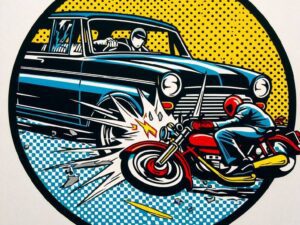The best ways to make a proper brew on the road in your van

When you’re adventuring on the road, creature comforts count. Snuggling up under a warm blanket after a long hike with your dog, eating a home-cooked meal after a canoeing adventure, and – perhaps most importantly – drinking copious cups of tea whenever you need a break.
So how do you go about making the perfect brew in your van? Thankfully, there are quite a few options, which we’ll cover here.
Pack all the essentials for the perfect cup of tea
Before we get started, you’ll need to bring the following items with you:
Teabags (or tea leaves and an infuser)
Milk and sugar to taste
Any equipment needed for your chosen method of brewing your cuppa
Note that even if you don’t have a cooler or fridge in your van, you can still make tea with milk; “milk sticks” (i.e. the little tubes of milk you’d often find in a hotel room) can be purchased in bulk online and have a long shelf life, or there is UHT milk (sometimes called long-life milk) that is sold at supermarkets. You can also use milk powder in a pinch.
Likewise, you can buy sugar sachets in bulk or decant some sugar into a food storage container for use on the road.
Boil water on a propane stove

If you’re going on a trip for multiple days or weeks, a propane stove is an excellent way to keep yourself supplied with food and hot drinks. Most propane stoves are fairly large compared to the other options outlined on this list, but if you’d like to use one to make home-cooked meals too, this is a great option.
The best place to use a propane stove is outside your vehicle as this prevents carbon monoxide from building up in your van. If you are going to use it inside the van, make sure you install a CO2 alarm and open as many doors and windows as you can while it’s in use.
Propane stoves are relatively easy to use:
Set the stove up on a flat surface
Connect the gas regulator to the stove (if required)
Connect the gas cylinder to the regulator (or insert it into the gas cylinder cartridge slot)
Turn the dial and ignite
Bring a flask of tea or hot water with you

If you’re only going on a short trip, bringing a flask filled with hot water for a few cups of tea will likely be more than enough. All you’d need to take alongside the flask are a few teabags, plus milk and sugar to taste.
Alternatively, you could brew the tea at home and pour it directly into your cup if you don’t want to take all the various bits and pieces you’d need for your cuppa.
Many don’t like the taste of tea when it’s been sitting in a flask for a long period of time, so that is something to bear in mind. You can counteract this by bringing milk separately and only adding it to the tea you’re about to drink. And if you have a separate travel mug to drink out of, this could help too.
Regardless, a flask of tea is a reasonable alternative if you’re in a pinch. It might not be the best brew you’ve made, but it’ll certainly help curb the cravings. You could even carry the flask with you while you’re out and about on a fishing trip, hike or mountain biking session.
Buy a 12V or 24V kettle to plug into the van lighter socket

If you haven’t converted your van into a camper and added plugs in the back, an easy solution for making a cuppa is to buy an electric kettle that can plug directly into the lighter socket in your van. These are usually 12V or 24V and can be purchased for around £20 online.
These types of kettles tend to take anywhere from five to 20 minutes to reach boiling point. To reduce the time this takes, try not to fill the kettle too much when possible – only boil the water you need.
Build your own fire to boil water yourself

If you’re up to the challenge of building your own fire, another option is going old-school and taking your tea making outdoors.
Although most campsites allow campfires, it’s best to check this before starting one. And if you’re camping elsewhere, make sure you have the landowner’s permission beforehand.
So how to go about building a fire?
Thankfully there are plenty of methods you can use, including some great beginner-friendly ones, so even if you haven’t built a campfire before, you should be able to make one relatively easily. Just make sure you have a bucket of water to hand to put out the fire if need be.
1. Gather dry wood of varying sizes from your surroundings
Gather small twigs, dry bark and leaves and/or pine needles for tinder, small sticks for kindling, and larger pieces of wood for fuel. The wood you use needs to be dry, as wet wood doesn’t burn very well and can even become a hazard.
If you aren’t staying in a wooded area and you’re struggling to find what’s needed for the tinder, many household items can be used instead, such as cotton wool balls dipped in Vaseline, crisps, balled-up newspaper pages or orange peels. Alternatively, you can purchase fire lighters, kindling and logs online instead.
2. Make a pile of tinder
Figure out where you want your fire to be, then place a pile of tinder at the centre. Ideally, you would build the fire in a designated fire ring far away from any standing trees or foliage in the area.
3. Add your kindling

There are a number of different formations you can use to create a campfire. We’ve outlined the two that are the best for cooking and boiling water:
Teepee formation
Lean small pieces of kindling against each other around the tinder in the formation of a tent, leaving small gaps between the sticks for airflow as well as a larger gap so you can add more tinder as needed.
Lean-to formation
Take a larger piece of wood and place it next to the tinder. Next, lean kindling against the large piece of wood and over the tinder at a 90-degree angle.
Log cabin formation
Place a couple of large logs next to each other with a gap in the middle. Next, place another couple of logs on top of these logs at a 90-degree angle – again with a gap in the middle – as if you were building a log cabin. Add tinder and kindling to the space in the centre of the “log cabin”. Next, add a couple more layers of logs. You ideally want to use slightly smaller logs for this section.
Add more tinder and kindling in the centre.
4. Light the tinder
With a lighter, match, fire steel or flint, light the tinder.
5. Keep feeding the fire
Once the fire is going strong, you can add larger logs of wood to the fire. Make sure you don’t smother the flames when you do this.
6. Boil the water
Put a pot of water on the fire to boil. You can put this directly onto the fire or place a mesh grill over the top of the campfire and then place the pot on top of it for extra stability.
You don’t even need a pot to boil water! You can actually boil water in a paper cup. This is because the water reaches boiling point before the paper cup reaches burning point, and the water conducts heat away from the paper as it heats up, which prevents the paper from reaching the temperature at which it would burn.
A great experiment to show your children – or to help you save on storage space if needed.
7. Make your cup of tea
Once the water’s boiled it’s time to make your cuppa, sit back, and relax. Nothing beats sitting around a campfire! Just make sure to put the fire out safely when you’re ready – you can douse the pit with water once the coals have cooled down completely.
Use solid fuel with a camping stove

If you don’t want to try to build a fire yourself, solid fuel tablets can be used as a fire source instead. These can be placed inside most camping stoves and lit in the same way you would with other fuels.
Although solid fuel stoves do exist, a more versatile and compact option is a twig stove. These are particularly ideal if you’re travelling in a small van or hiking and wild camping throughout your trip. Whilst you might not be able to make particularly gourmet grub with one, you’ll definitely be able to make a brew to warm yourself up.
Use a power bank and bring a travel kettle

If you go on regular overnight trips, a power bank can come in handy as it allows you to charge your devices or use appliances while on the go. To make a cup of tea, you can plug a travel kettle into the power bank and use it as you would a normal kettle.
It’s important to note, though, that power banks are quite bulky, with most ranging from 3kg to 10kg, so they aren’t for everyone. But if you have quite a few devices to charge (or you’re desperate for a brew just like the one you’d make at home!), they’re a great addition to your setup.
Another benefit is that travel kettles plugged into a power bank are generally able to reach boiling point quicker than if you were to plug a 12V kettle into a lighter socket. This makes them a good option if you want to minimise the amount of time spent waiting for the kettle to boil.
Use a battery-heated mug

These work in much the same way as a flask, except you can choose the perfect temperature you’d like to keep your beverage at. This means you don’t have to worry about burning your tongue on a cup of tea that’s too hot or face a disappointedly tepid brew when your flask cools down.
Whilst there are only a couple of battery-heated travel mugs available on the market – Ember and Cauldryn – they can be a great alternative to a regular flask if you’d prefer a device that allows you to drink your tea whenever you want. Most people set their mug around 60-70 degrees – not too hot, not too cool. Note that these are a relatively expensive way of getting your caffeine fix, so they’re not for everyone.
Don’t forget van insurance before your next trip
Whatever your next getaway plans are, make sure you’re covered with our WhatVan? award-winning van insurance so you can enjoy your cup of tea with peace of mind. We can cover all types of private vans, either on a short-term basis or an annual basis, in the UK, Europe, and further afield.
And if you’re using your vehicle for hobbies like canoeing, fishing, mountain biking or camping and you need to cover your equipment, we can also cover your personal possessions for up to £1,500.
Call us on 0800 369 8590 or book a callback at a time that’s convenient for you.






